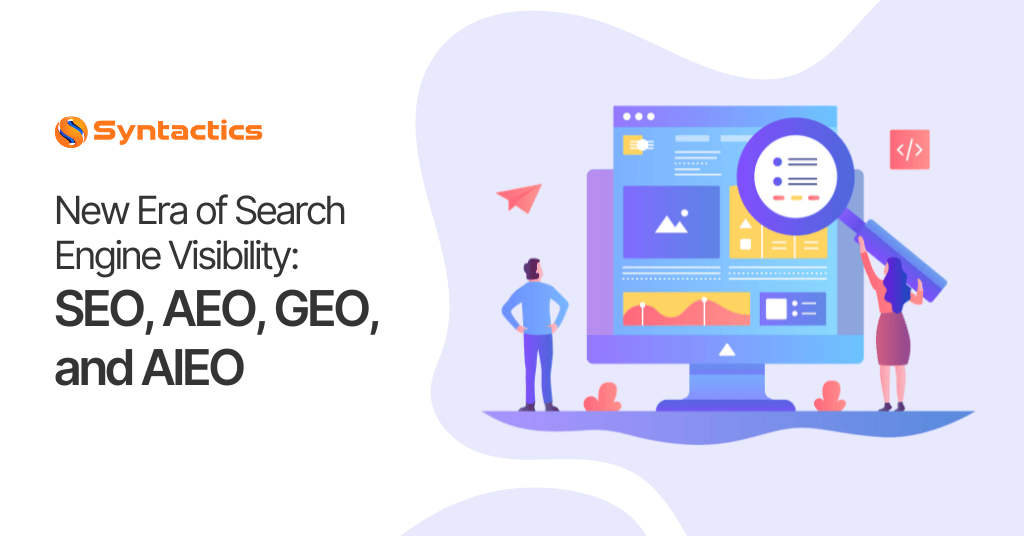
New Era of Search Engine Visibility: SEO, AEO, GEO, and AIEO
Zero-click era is here! Learn how to align your strategies and improve your search engine visibility with SEO, AEO, GEO, and AIEO.
The rules of search engine visibility are rapidly changing. What once worked, such as keyword usage, backlinking, and siloed SEO, no longer guarantees being seen. In fact, users today don’t just click links; they get answers, instantly, directly, and often without visiting a website.
With the recent June 2025 Core Update, search engines have evolved into answer engines. AI (Artificial Intelligence) models now synthesize information across the web to deliver responses in seconds. To stay visible, you should optimize beyond Google’s organic results and win across four interconnected layers — SEO, AEO, GEO, and AIEO.
Key Takeaways
- Over 58% of searches in the U.S. and nearly 60% in Europe generate zero clicks.
- Search visibility is no longer about ranking; it’s about being selected by AI as a trusted source.
- The future of search visibility lies in mastering SEO, AEO, GEO, and AIEO as an integrated strategy.
TABLE OF CONTENTS
Why Businesses Should Go Beyond Traditional SEO
Core Principles of SEO, AEO, GEO, and AIEO
SEO vs. AEO vs. GEO vs. AIEO: Key Differences
10 Key Strategies to Optimize for SEO, AEO, GEO, and AIEO
FAQs About Search Engine Visibility
Why Businesses Should Go Beyond Traditional SEO
For years, the formula was simple: rank high, earn clicks, drive traffic, and convert. But that model is transforming fast. In fact, a growing majority of searches now end without a single click to an external website. This shift is a structural change in how people interact with search. So, if your marketing strategy still relies on traditional SEO, you’re missing out on the audience.
Recent data reveals a stark reality that more than 58 out of every 100 searches in the U.S. generate no clicks. In Europe, nearly 60 out of 100 searches never leave Google. This means that visibility now does not depend on ranking, but more on being chosen by AI as a trusted source.
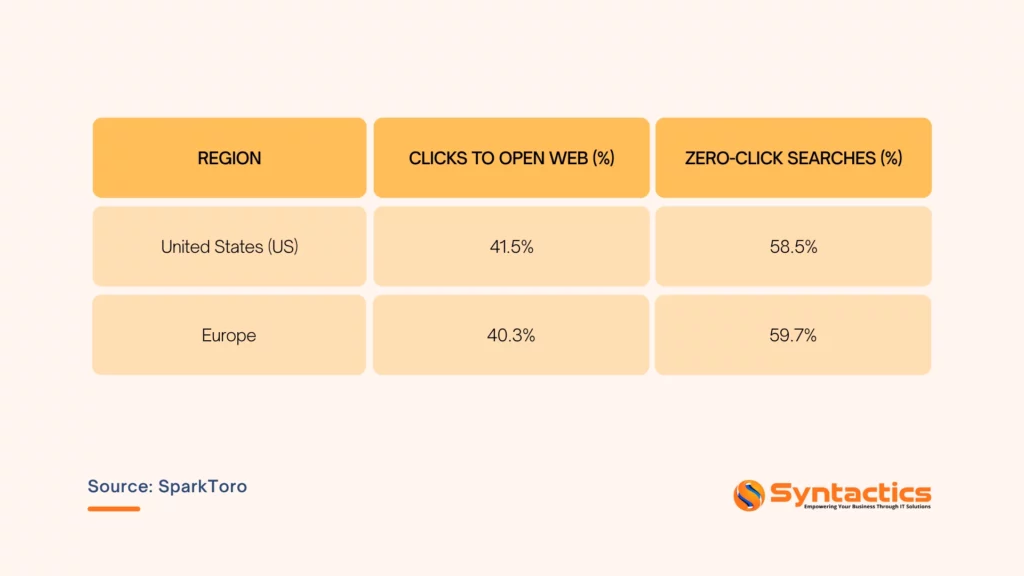
Source: SparkToro
What’s Driving the Shift?
Mainly, zero-click search is driven by the rapid evolution of AI-powered answer engines like Google’s AI overviews and Bing Copilot. These systems deliver direct answers above organic results. Features like snippets, knowledge panels, and voice search offer instant responses, which reduces clicks.
At the same time, Google’s own platforms, like Maps, YouTube, and Shopping, keep users within its ecosystem. This reduces the need to visit external websites, limiting traffic to third-party platforms. So, if your content only exists to rank and attract clicks, the following will impact your business:
- Traffic declines even for top-ranking pages;
- Brand visibility shifts from website to AI-generated summaries, and
- Authority is now determined by machines, not just backlinks.
To navigate the new era of search engine visibility, understanding each approach — SEO, AIEO, GEO, and AEO — is essential to staying relevant.
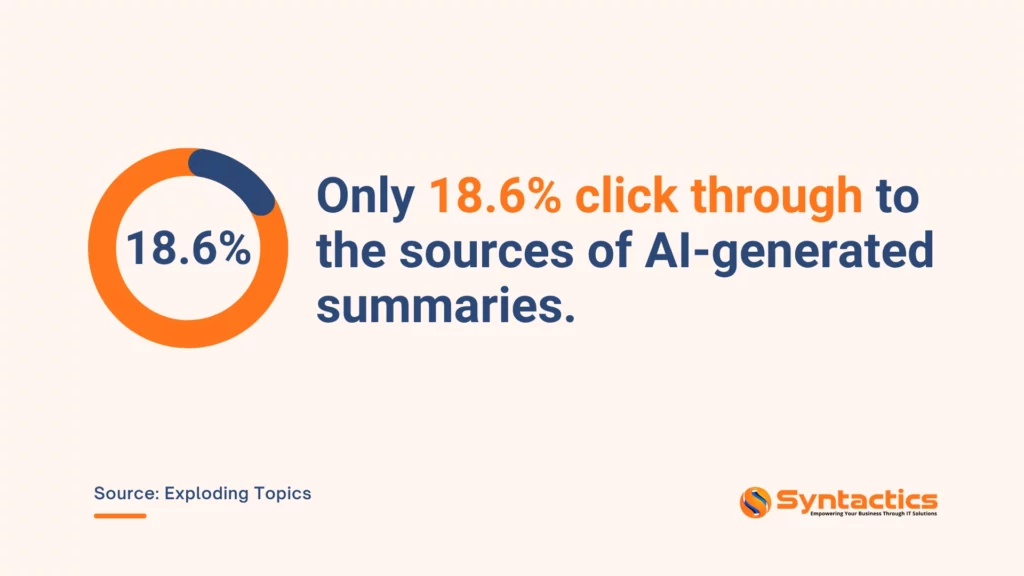
Source: Exploding Topics
Core Principles of SEO, AEO, GEO, and AIEO
Understanding the core function of each approach helps clarify how they can contribute to visibility in today’s AI-powered search environment.
SEO (Search Engine Optimization)
This is the foundation of search visibility, providing the structural basis for discovery in modern search environments. SEO focuses on improving a website’s organic ranking through the following:
- Keyword targeting;
- Technical structure;
- Backlinks, and
- Content relevance.
Additionally, SEO requires integration with AI-friendly signals like structured data and E-E-A-T (Experience, Expertise, Authoritativeness, Trustworthiness). Its goal is to help search engines index, interpret, and prioritize your pages in results.
Here’s our quick guide to Google E-E-A-T:
AEO (Answer Engine Optimization)
This approach is designed for visibility in featured snippets, “People Also Ask” boxes, voice search, and knowledge panels. Success in AEO depends on clear, concise, and well-structured content, especially FAQ-style answers, step-by-step guides, and schema markup (FAQPage, HowTo). The goal is to be the source that powers the answer, even if the user never clicks.
GEO (Generative Engine Optimization)
GEO is about becoming a trusted citation source for generative AI like ChatGPT, Perplexity, Gemini, and the like. These models retrieve links and synthesize information from authoritative content.
To win in GEO, your content should be citation-ready: factual, well-sourced, recently updated, and backed by real expertise. This includes publication dates, author credentials, and references to increase your chances of being cited.
AIEO (Artificial Intelligence Engine Optimization)
AIEO focuses on visibility within AI-powered search experiences, such as Google’s AI Overviews and Bing with Copilot. Unlike traditional SEO, AIEO rewards freshness, clarity, and machine-readability.
Content should be optimized for AI digestion, using structured headings, schema markup, and neutral and factual language. The goal is to be included in AI-generated summaries, instead of ranking below them.
SEO vs. AEO vs. GEO vs. AIEO: Key Differences
While all four models aim to improve online visibility, they differ in how they serve content, where that content appears, and how success is measured.
Below is the comparison chart between SEO, AEO, GEO, and AIEO.
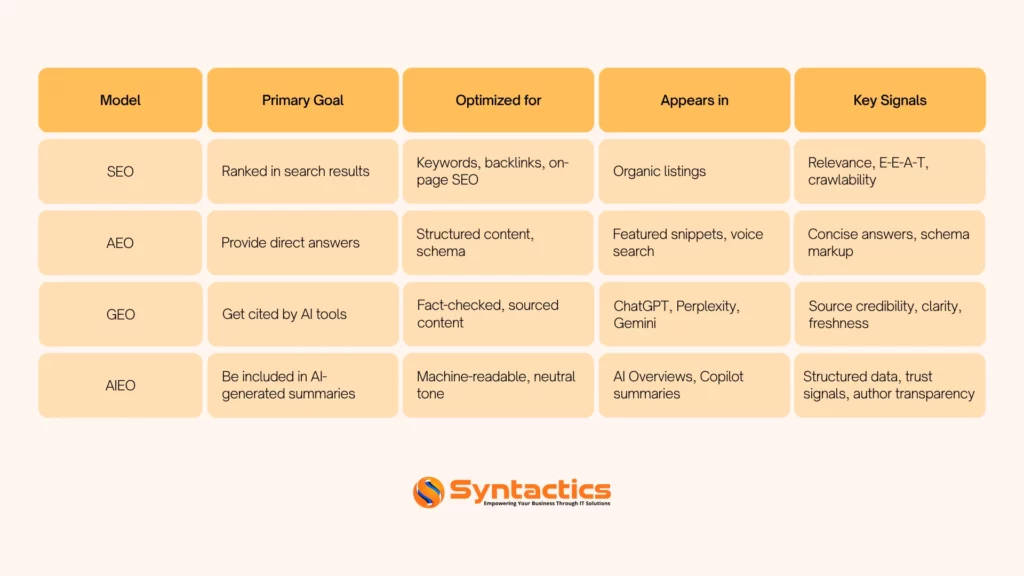
The most effective strategies don’t treat these as competing models. Instead, they integrate all four, ensuring content is discoverable, answerable, citable, and AI-ready, across every surface where users now find information.
10 Key Strategies to Optimize for SEO, AEO, GEO, and AIEO
Optimizing for search visibility requires a hybrid approach, combining all four to achieve the best results. It’s best to align them based on your business goals and audience behavior, not to choose one over the other.
1. Adopt a Content Layering Approach
Create content that serves multiple purposes. It’s best to start your introduction with an executive summary for AI and GEO digestion. You can then follow with a structured Q&A, clear headings and schema for AEO and voice search in the middle layer of your content. After that, close with a comprehensive, well-researched analysis for SEO and topical authority.
To solidify as your trust layer, add author bio, publication date, citation, and E-E-A-T signals for credibility across all models. In this way, it ensures your content is valuable, whether it’s read, ranked, answered, or cited.
2. Implement Schema Markup at Scale
Use JSON-LD structured data to make your content machine-readable. Apply the FAQPage schema to all articles with common questions, while using the HowTo schema for step-by-step guides. It’s also essential to add Article and NewsArticle schema to boost freshness signals and include Speakable schema for voice search compatibility. Tools like Google’s Structured Data Testing Tool or Schema.org validators help ensure accuracy.
3. Optimize for AI Digestibility
AI systems favor content that is easy to analyze and summarize.
- Use clear, descriptive headings (H2, H3) to structure logic.
- Keep your paragraphs short (1–3 sentences).
- Avoid jargon, fluff, and promotional words or language.
- Use bullet points and numbered lists for better scannability.
Thus, write not just for humans, but for machines that extract meaning. Find out more in this blog:
4. Always Implement the E-E-A-T Principle
E-E-A-T is not just for traditional search, but also a cross-model ranking and citation signal. Therefore, include author bios with real photos, credentials, and social proof.
So, reinforce credibility by adding publication and update dates to every article and cite reliable sources, such as official reports, statistics, and more. Strengthen trust by showcasing first-hand experience, success stories, and case studies.
Remember, AI models also use these signals to assess credibility before citing or including your content.
5. Publish with Purpose, Build Topical Authority
The goal is to become the most authoritative source on a subject, and AI rewards depth and consistency.
So, focus on topical clusters, not generic keywords. Choose three to five core topics relevant to your audience, create pillar pages, and publish supporting subtopic articles weekly or biweekly. It’s also critical to perform strategic internal linking to build domain authority.
6. Regularly Update your Content
Freshness is a key signal for AI Overviews and AIEO. On top of that, AI models favor recently updated content, especially for time-sensitive topics like health, tech, and finance.
Thus, audit and update top-performing content every 6 months, add new data, insights, and references with updated dates.
7. Optimize for Zero-Click Surfaces
Even if users don’t click, your content can still be seen in zero-click surfaces like featured snippets, People Also Ask, and AI-generated summaries. Focus on the following:
- Answer common questions directly in the first 60 words.
- Use natural language that matches voice search queries.
- Target “People Also Ask” questions with concise, schema-powered answers.
- Monitor Google’s AI Overviews to see which sources are being pulled and aim to be one of them.
Keep in mind that the goal is to be the answer, not just a clickable result.
8. Build Citability for Generative AI (GEO)
Make your content AI models prefer to cite.
- Include direct quotes or statistical takeaways in bold or callouts.
- Structure key facts as standalone sentences (ex., “According to a 2025 SparkToro study, 58.5% of U.S. searches generate zero clicks.”).
- Use canonical URLs and avoid duplicate content.
- Submit your site to AI training data platforms where allowed (ex., through Google Search Console or publisher partnerships).
The more citable your content, the more likely it is to appear in AI responses.
9. Audit Your AI Visibility
Use tools to track performance beyond organic search.
- Google Search Console: Monitor impressions to determine if your content appears on AI Overviews and featured snippets.
- SEMrush, Ahrefs, or Surfer: You can track your AEO success if you’re ranking in position zero or PAA sections.
- ChatGPT, Gemini, or Perplexity: utilize these tools if your content is being cited or referenced by AI.
- Bing Webmaster Tools: Similar to AI Overviews, check your visibility through Copilot responses.
Treat AI presence as a KPI (Key Performance Indicator), not a side effect.
10. Create an AI-Ready Content Workflow
Search visibility today now requires ongoing optimization. To future-proof your team, include SEO, AEO, GEO, and AIEO goals in your marketing process and every piece of your content. For your template, use standardized structures with schema, EEAT, and summary sections.
Upon review, audit for clarity, freshness, and machine-readability before publishing. Additionally, repurpose content into micro-formats (ex., FAQs, infographics, social snippets).
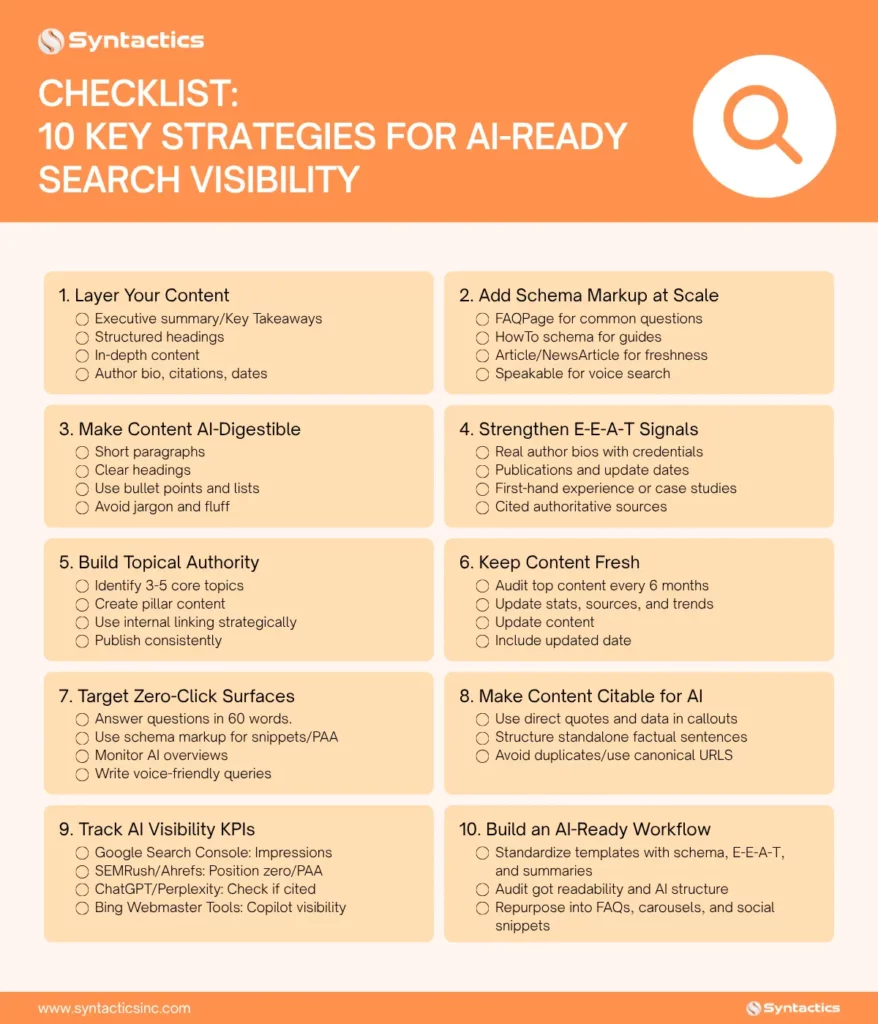
Final Thoughts
SEO, AEO, GEO, and AIEO offer unique advantages in this new landscape of search visibility. But, it’s worth noting that it demands a unified strategy that embraces AEO to answer, AIEO to appear in AI summaries, and GEO to be trusted by generative models. Win and thrive by building content that serves both humans and AI with clarity, credibility, and purpose.
To put this into action, start building your visibility with a strategy that works across all AI search engines. With our expert SEO team from the Philippines, we can help you create, optimize, and scale content that ranks, answers, and gets cited.

FAQs About Search Engine Visibility
Does traditional SEO still matter?
Yes. SEO is still the foundation, but it’s no longer enough on its own. High rankings in search results build authority and support AEO, AIEO, and GEO. However, with rising zero-click searches, relying solely on SEO means missing most of the audience.
To stay visible, integrating SEO, AEO, GEO, and AIEO ensures your content ranks, answers, appears in AI summaries, and earns trust across platforms.
Can small businesses compete in this new search landscape?
Yes. Small businesses can leverage first-hand experience, niche expertise, and localized content to build trust. By focusing on E-E-A-T, structured data, and answering real user questions clearly, they can outperform generic content from bigger players in AEO, AIEO, and GEO. For a strategic approach, contact us today.
What role does E-E-A-T play in AI visibility?
E-E-A-T (Experience, Expertise, Authoritativeness, Trustworthiness) is more important than ever. AI systems use these signals to assess credibility before citing or including your content. As such, it can help your content pass the trust threshold for both Google and generative AI models.




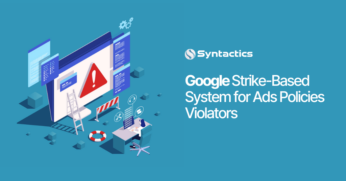




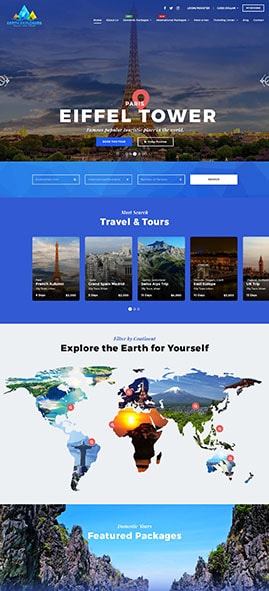

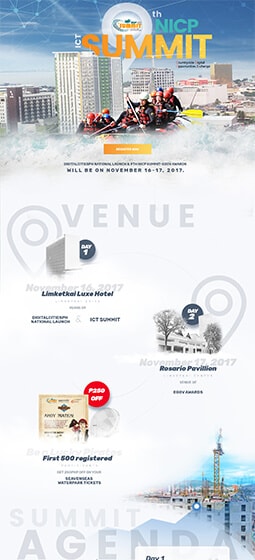
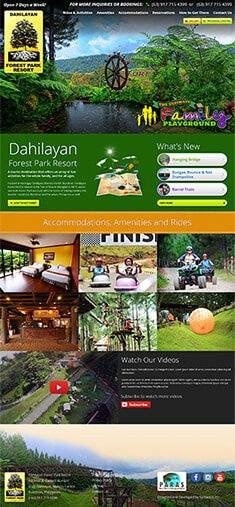

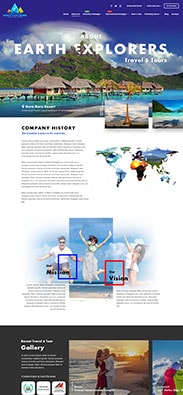

Comment 0